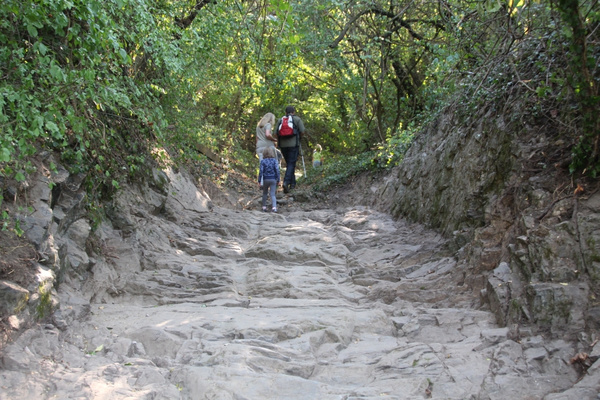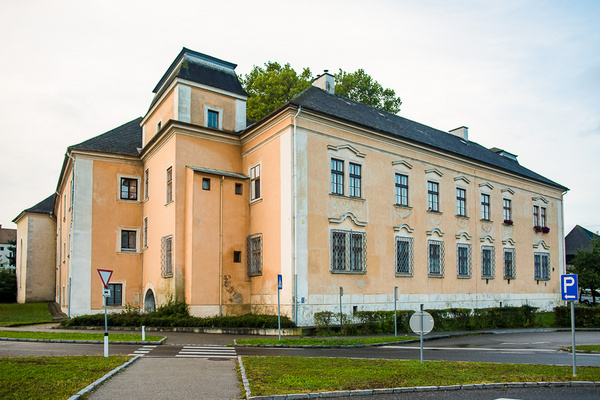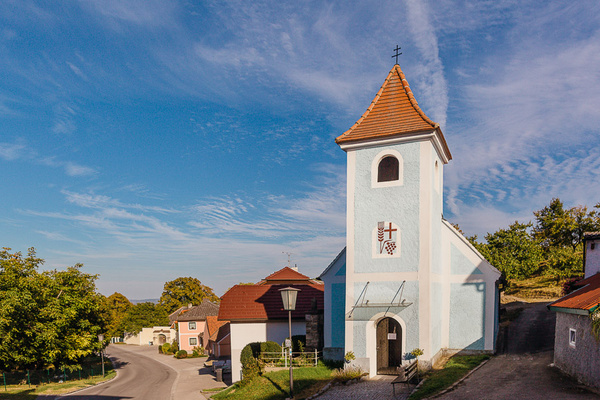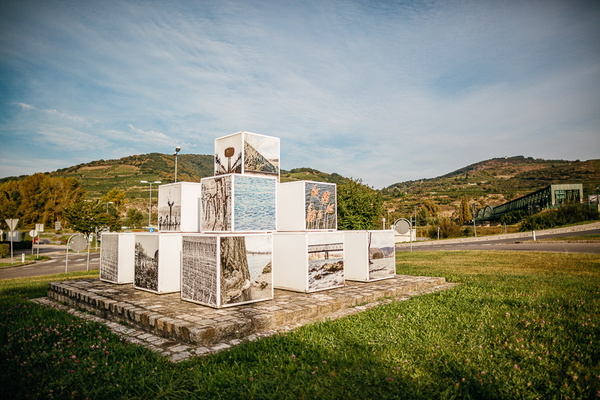Sights
Roman Fortifications of the Favianis Fort

Mautern on the Danube has something special to offer: Here you will find the best preserved remains of Roman fort walls in Austria: an exceptionally well preserved section of Roman wall in the north west part of the camp is flanked along one side by a mighty Late Antiquity period horse shoe tower and the remains of an ancient timber tower. In succeeding centuries the Roman wall was incorporated into the town's defences and thus preserved to the present day.
Roman Road in Mauternbach

The Roman road to the south of Mauternbach is familiar to hikers: starting at the War Memorial it leads steeply up towards Unterbergen. Most likely it made its way in a westerly direction from the Favianis fort in Mautern, through the Dunkelsteiner Forest to the next Roman military outpost in Namare/Melk.
An archaeological survey commissioned by the national monuments office (Bundesdenkmalamt), in which part of the road was exposed, yielded interesting findings: Not only was the road dug out of the rock with enormous effort, there was also distinct evidence of cart tracks. The road which is assumed to date from Roman times remained in use until modern times.
Schloss Mautern

From 972 this building with four wings acted as the official Mautern residence of the bishops of Passau. Here lived the so-called 'Guardians' (Pfleger). These were the property administrators, employed by the Bishopric and endowed with secular power. In 1734 the Schönborn family acquired the Schloss and sold it on in 1913 to the town of Mautern. In 1907 the property was ravaged by a devastating fire. Right up to the present day Schloss Mautern has been used for residential purposes.
St Andrew's Chapel in Schloss Mautern

The first recorded mention of St Andrew's Chapel dates back to 1306. In 1618 an early baroque altar was erected in the chapel. The chapel was deconsecrated at the end of the 18th century, after which it was divided into several dwellings thanks to the incorporation of a suspended ceiling. Count Schönborn-Buchheim bequeathed the altar to the town of Krems in 1903. Subsequently the altar was displayed in the town museum in Krems; later, however, due to space constraints, it was dismantled and removed to various places for storage.
The altar was returned to its original location in Schloss Mautern in November 2018 after extensive restauration works and the full-scale reconstruction of the chapels' interior.
Janaburg

Located outside the town wall to the south east of the town of Mautern, Janaburg, also known as Janahof, is the name of a group of buildings erected by one Sebaldus Janer. Janer was a protestant who had distinguished himself in the Turkish wars. For this he was granted the title of 'Knight of Janaburg'. An impressive late Renaissance gateway in the style of a triumphal arch forms the entrance from St Pöltner Straße. The former residence has been painstakingly renovated in recent years and is used today for residential purposes.
Schloss Baumgarten

Construction of the late baroque castle was undertaken in 1756 by the then owner, Franz Josef Giegl. In 1911 the estate agent Karl Faltis bought the building from Anton Saahs and subsequently commissioned comprehensive alterations. Architectural items from other castles were brought to Baumgarten, for example the two mights Sphinxes at the north entrance. Faltis' daughter Helga brought the property by way of dowry to her marriage with the imperial-royal Minister of Education Baron Max Hussarek von Henlein. The present owner is Constantin Hohenlohe.
Today the property is a listed building. The site is not accessible to visitors.
Parish Church of St Stephen

As early as the 11th century it was believed there had already existed a Roman building on this site. The parish church got its present form during transformation to baroque style under the Architect Carlo Antonio Carlone. The gothic elements of the three-nave church built around 1400 are only partly discernible against the predominant baroque forms.
The most significant works of art in the church are the 14 pictures of the Way of the Cross by Martin Johann Schmidt, known as Kremser Schmidt (around the year 1770). The altar piece 'The Glory of St Stephen' is by Andreas Rudroff, a pupil of Kremser Schmidt. Next to the entrance is the gravestone of Johann Schmidt, Kremser Schmidt's father, an eminent sculptor.
At the northern end of the Parish Church the Barbara Chapel has been added. Previously this served as Chapel of Rest for the cemetery around the church which is no longer in use. Also part of this cemetery was a round ossuary, the remains of which were investigated during an archaeological dig in 1980.
The Chapel in Baumgarten

The Mary Magdalene Chapel in the heart of Baumgarten was built by the local association of foresters and recently renovated in 2015. Services are regularly held in this small church building.
Daughter Church in Hundsheim

The daughter church of St John the Baptist in Hundsheim dates back to a previous medieval building which was a place of pilgrimage in the 14th century. This sacred building owes it current characteristically early baroque appearance to comprehensive renovations around the year 1628. In 1758 Martin Johann Schmidt created the impressive altarpiece over the high altar.
St Margaret's Chapel

This sacred building was first mentioned in 1083 in the foundation deeds of Göttweig. The south facade stands on the former Roman fort wall. Inside there are precious frescos from the 12th century. A damaged inscription on the front wall of the apse tells of relics of Saints John, Paul, Cecilia, Agatha and Margaret.
St Margaret's Chapel, which was consecrated under Joseph II, was used in ensuing years as stables, as a store, as a fire station and as a museum. Today it houses the "Civitas Mutarensis" exhibition with a presentation of Mautern in the Middle Ages and early modern times.
In 2016 the church roof was completely refurbished.
'Photo Dice' Sculpture

Located at the roundabout on the road leading to the Danube Bridge is a striking example of public art sculpture based on an idea of the Krems artist Gregor Kremser. In 2014 the townsfolk of Mautern undertook a community project to depict their home town in photographs and to mount the pictures on illuminated dice-shaped displays. Each of the four sides deals with an intrinsically Mautern theme: wine, the Danube, local history and architectural peculiarities.
Register of Listed Buildings
Within the community of Mautern on the Danube there are many precious buildings of artistic importance which are listed and protected.




